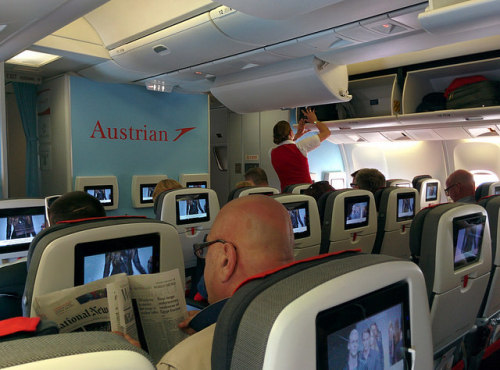
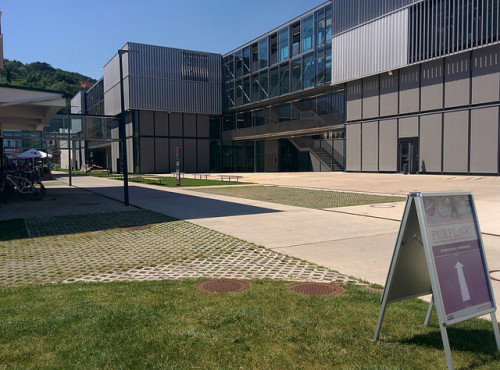
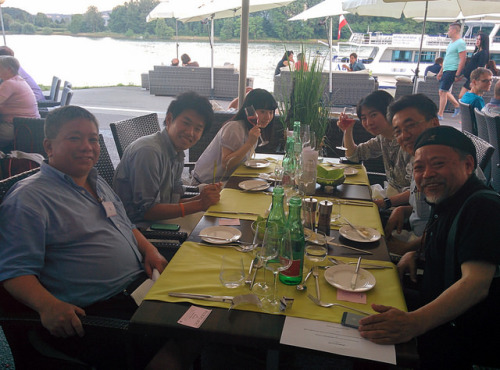

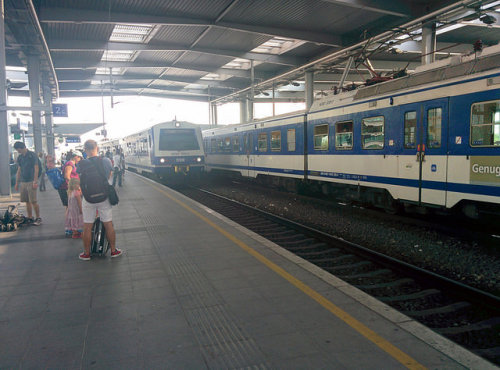







[See the Earls Court album of 9 webphotos (with a slideshow option)]
Our sightseeing started around Pimlico, where we unexpectedly found a summer show of graduate works at the Chelsea College of Art and Design. The installation by Minji Lee was one of the more intriguing.

[See the Chelsea School of Art of 15 webphotos]
Across the street, at the Tate Britain Gallery, we encountered voices in the upper gallery, so we timed a response to oooh back at them.
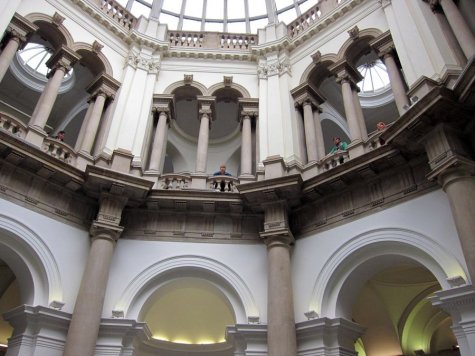
A body movement artist mimicked anyone who entered her range, so Adam tried to challenge her with less conventional poses.
[See the Tate Britain album of 6 webphotos]
The Borough Market offers a wide variety of fresh local produce and meats. We moved from place to place to dine al fresco (i.e. standing up).
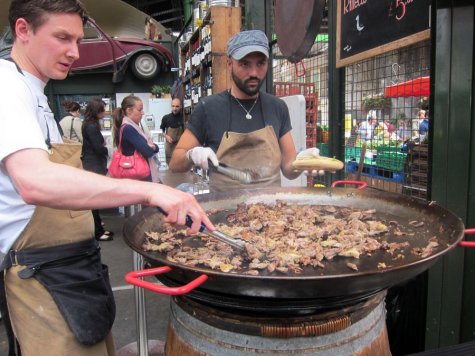
[See the BoroughMarket album of 12 webphotos]
The Design Museum has features notable objects, both everyday and unique. Guitar Hero is part of the everyday.
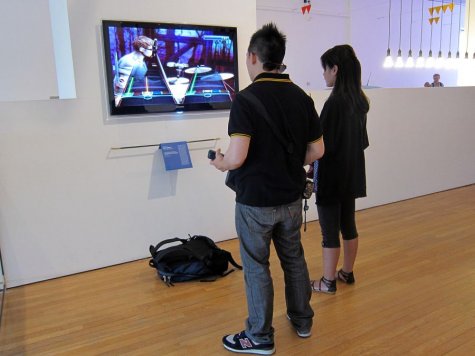
[See the Design Museum album of 3 webphotos]
The Turbine Hall of the Tate Modern was vacant on this visit.

[See the Tate Modern album of 7 webphotos]
From the South Bank, we crossed over the Millennium Bridge, to walk towards Piccadilly Circus and Chinatown.
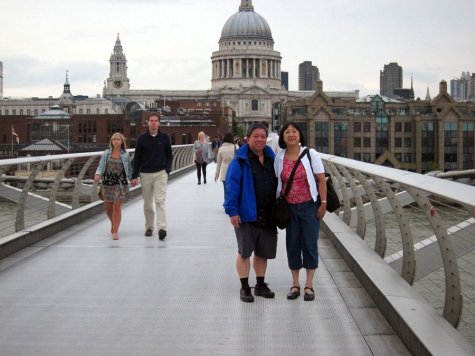
[See the MillenniumBridge-Picadilly-Chinatown album of 13 webphotos]
DY and I saw the Saatchi Gallery on Boundary Road in North London, and I visited the gallery when it was in County Hall on South Bank. This was our first visit to the location at the Duke of York’s HQ near Sloane Square.

[See the Saatchi Gallery album of 24 webphotos]
Dav and LJ joined us for shopping at Petticoat Lane Market, and then Indian cuisine at Brick Lane.
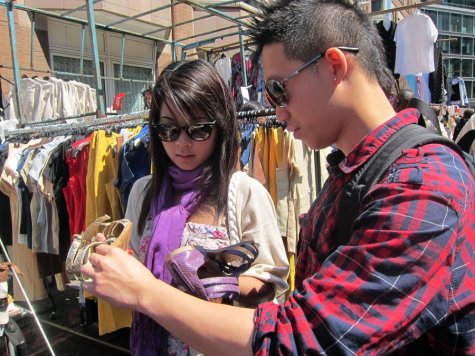
[See the PetticoatLane-BrickLane alboum of 28 webphotos]
We arrived at Camden Town late in the day, so most of the temporary stalls either closing or closed.
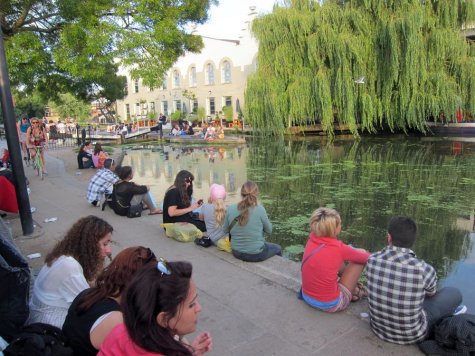
[See the Camden album of 8 webphotos]
We budgeted a few hours to visit the Victoria and Albert Museum. The venue is mammoth, so we tried to be selective, wending our ways through the mazes of hall.
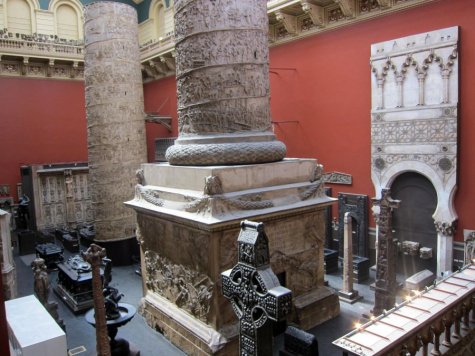
[See the Victoria & Albert Museum album of 12 webphotos]
To close the loop on some history of science, I had contacted the Tavistock Institute of Human Relations, and scheduled to visit their offices in East London. This satisfied a personal curiosity, since I had visited the old site near Swiss Cottage in 2009, .

[See the Tavistock and Chinatown album of 3 webphotos]
I travel through London regularly, know the city well, and am comfortable getting around. Travelling with the family at tourist speed is a luxury.
Walking around to the west side of the building, I could see the dome of St. Paul’s Cathedral in the distance.
From the west side, the entry of to the Tate Modern is down a long ramp.
The ramp continues inside the building into the Turbine Hall.
The galleries are on the upper floors. I went up to Level 3, and saw some red benches with display terminals. Continue reading “2008/09/12 Tate Modern, South Bank, London“